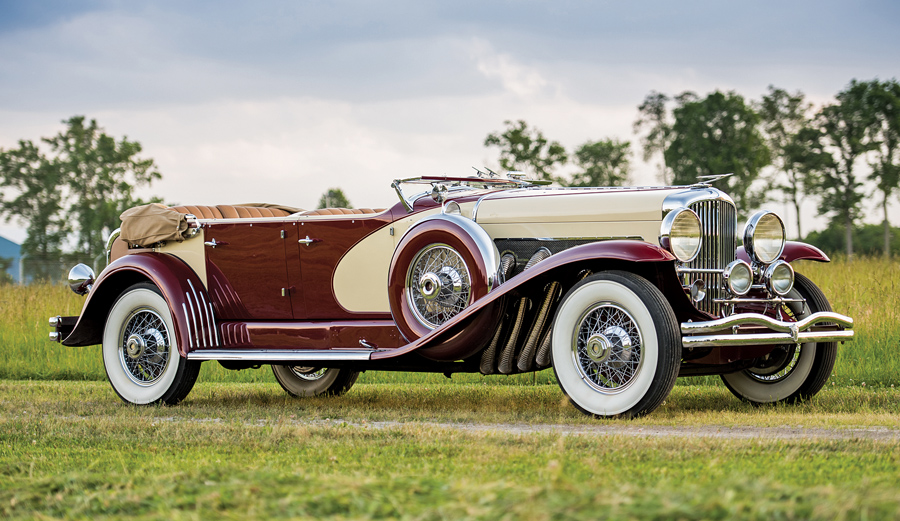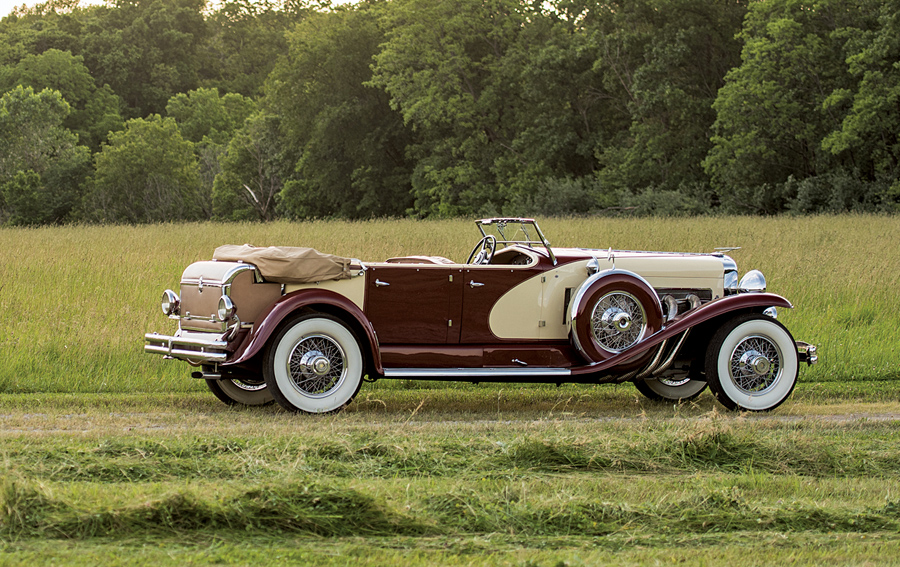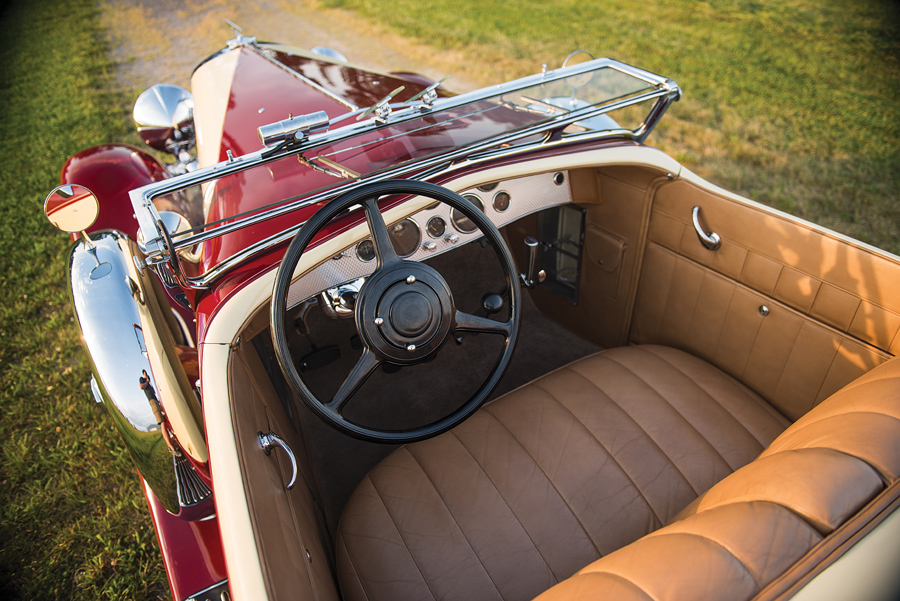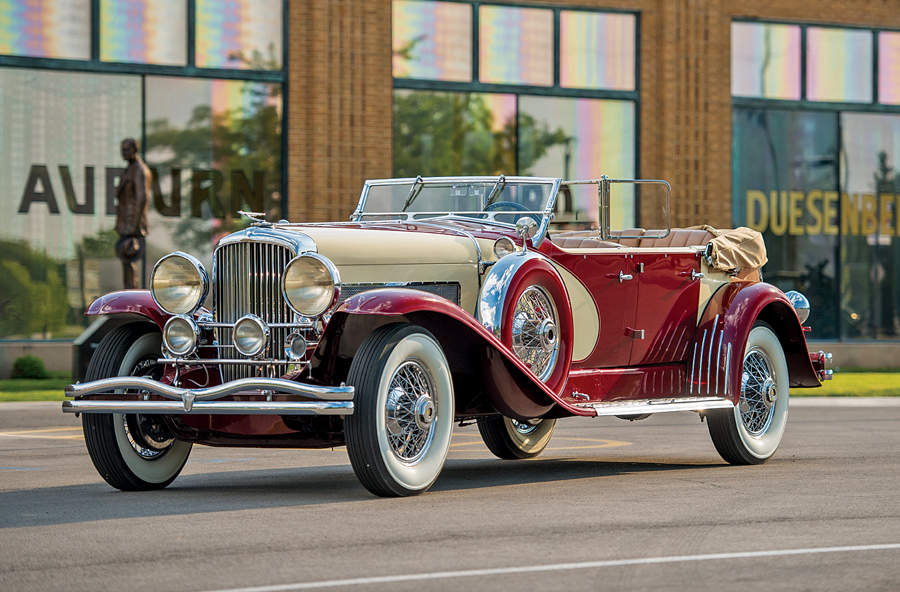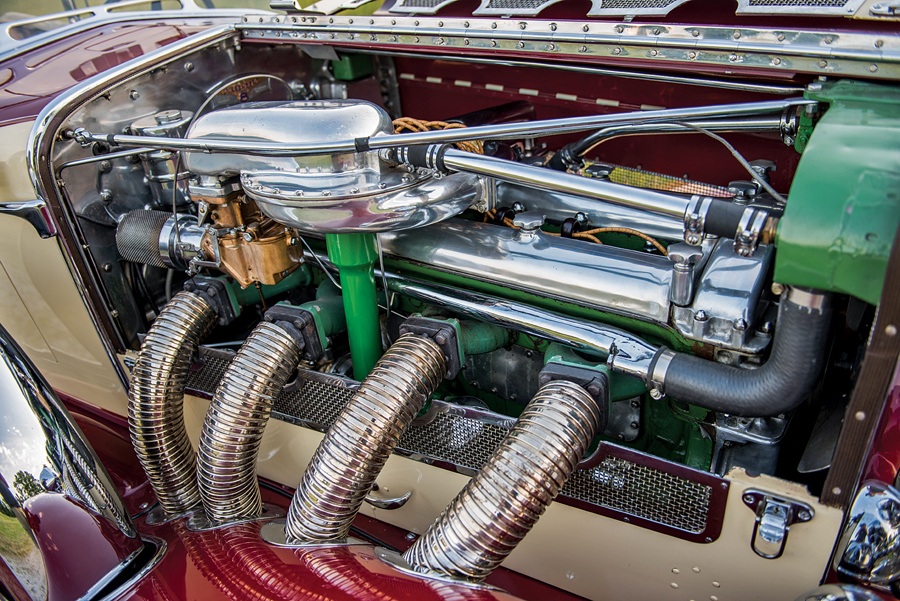SCM Analysis
Detailing
| Vehicle: | 1933 Duesenberg Model SJ “Sweep Panel” phaeton |
| Years Produced: | 1933 |
| Number Produced: | 36 Model SJs |
| Original List Price: | $9,500 (chassis only) |
| SCM Valuation: | $1,375,000 (Model J) |
| Tune Up Cost: | $3,000 |
| Chassis Number Location: | Left frame rail |
| Engine Number Location: | On the bellhousing and rods |
| Club Info: | ACD Club |
| Website: | http://www.acdclub.org |
| Alternatives: | 1929–37 Duesenberg Model J phaeton, 1933–36 Packard Twelve open, 1932–35 Cadillac V16 open |
| Investment Grade: | A |
This car, Lot 4140, sold for $2,300,000, including buyer’s premium, at Auctions America’s sale in Auburn, IN, on September 4, 2017.
Fred and Augie Duesenberg created the legendary Model J in 1928, but they had previously “made their bones” building high-performance race cars and engines.
Their 4-cylinder, walking-beam-engine-powered cars were driven by the elite names of the racing world, including Eddie Rickenbacker, Ralph DePalma and Abe Jenkins. Starting in 1913, they competed in 15 consecutive Indianapolis 500 races. They fielded 70 Duesenbergs, with almost half finishing in the top 10.
Their engine-building success led to the formation of Duesenberg Automobiles and Motors, which was located in Indianapolis.
The Model A featured a 183-ci, single-overhead-camshaft inline eight, and it was one of the most powerful automobiles of the era.
The Duesenberg brothers’ innovative, self-taught engineering could not withstand the effects of the post-World War I recession — and their lack of business knowledge. In that six-year period, only 650 of the very expensive Model As were produced, and Errett Lobban Cord acquired what was left of Duesenberg Automobiles and Motors in 1925. Cord added it to his automotive empire. Fred Duesenberg was retained as vice president of Engineering and was given a simple directive: build the best automobile in the world.
The result was the Duesenberg Model J, which was introduced at the 1928 New York Auto Salon to great acclaim. It was not long thereafter that Fred Duesenberg made it even more powerful by applying a supercharger to the 420-ci engine. Fred Duesenberg, however, died in an accident while testing a Model J, and his brother, Augie, was brought in to finish the project.
The ultimate Duesenberg
There are Duesenbergs, and then there is the Duesenberg.
The Model SJ was the pinnacle of American luxury performance. The SJ delivered 320 horsepower at speed while retaining the legendary performance at lower rpms. Only 36 SJs were produced, and the conversion was far more involved than simply adding a supercharger.
The engine had to be rebuilt with stronger valve springs, high-performance connecting rods and external exhausting to fit the supercharger alongside the engine. The massive, shiny, creased exhaust tubes that exited through the sides of the hood quickly identify the car as an SJ. Cord trademarked this look and used it on several of his other marques.
A Duesenberg chassis cost $8,500 — later increased to $9,500 —and the coachwork could easily double that at a time when an Auburn cost less than $1,000.
Our subject SJ was one of just three with coachwork by LaGrande.
The car has an interesting history, and it was known as the “Mexico City SJ” as it became part of the Hipódromo de las Américas, a major horseracing track near Mexico City. It remained in Mexico City until 1968, when it returned to the United States.
The car was restored in 1974.
The head of the class
As an SJ, our subject car goes to the head of the class. Add in the “Sweep Panel” coachwork by LaGrande and its unique one-off styling features, and the car rolls in rarified territory.
The car retains its original engine, body and chassis, although the supercharger is a modern reproduction. This is not unusual, as the unreliable units were often replaced at the factory.
The car wears an older restoration and was well maintained during its 25-year tenure in the famed General Lyons Collection. A freshening is in order — if the new owner wants the Duesenberg to be a factor in serious judging.
Duesenberg SJs in this configuration are rarely offered at public auction, and the SCM Platinum Auction Database does not list any transactions.
Gooding & Company sold a Murphy-bodied SJ convertible coupe for $2,200,000 at their 2005 Pebble Beach Auction. That car is a more common body style.
RM Auctions sold a J. Herbert Newport-designed Duesenberg SJ convertible coupe at their March 2013 Amelia Island sale for $4,510,000.
While our car is expensive compared to a Model J Duesenberg, I consider it well bought, as it is just one of 36 true SJs produced. ♦
(Introductory description courtesy of Auctions America.)
